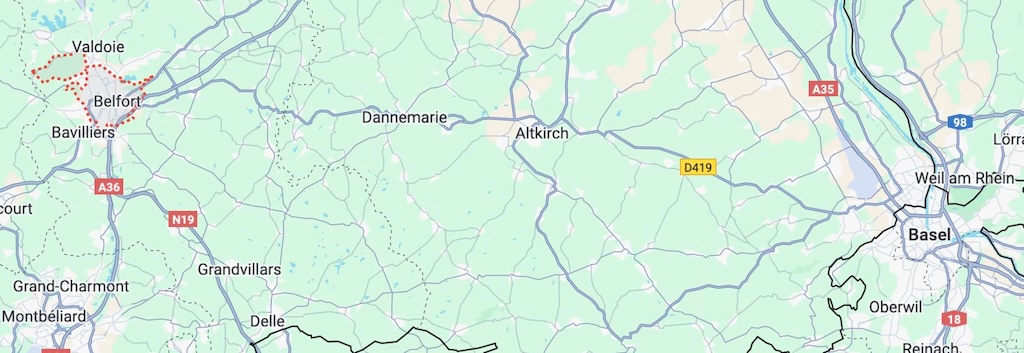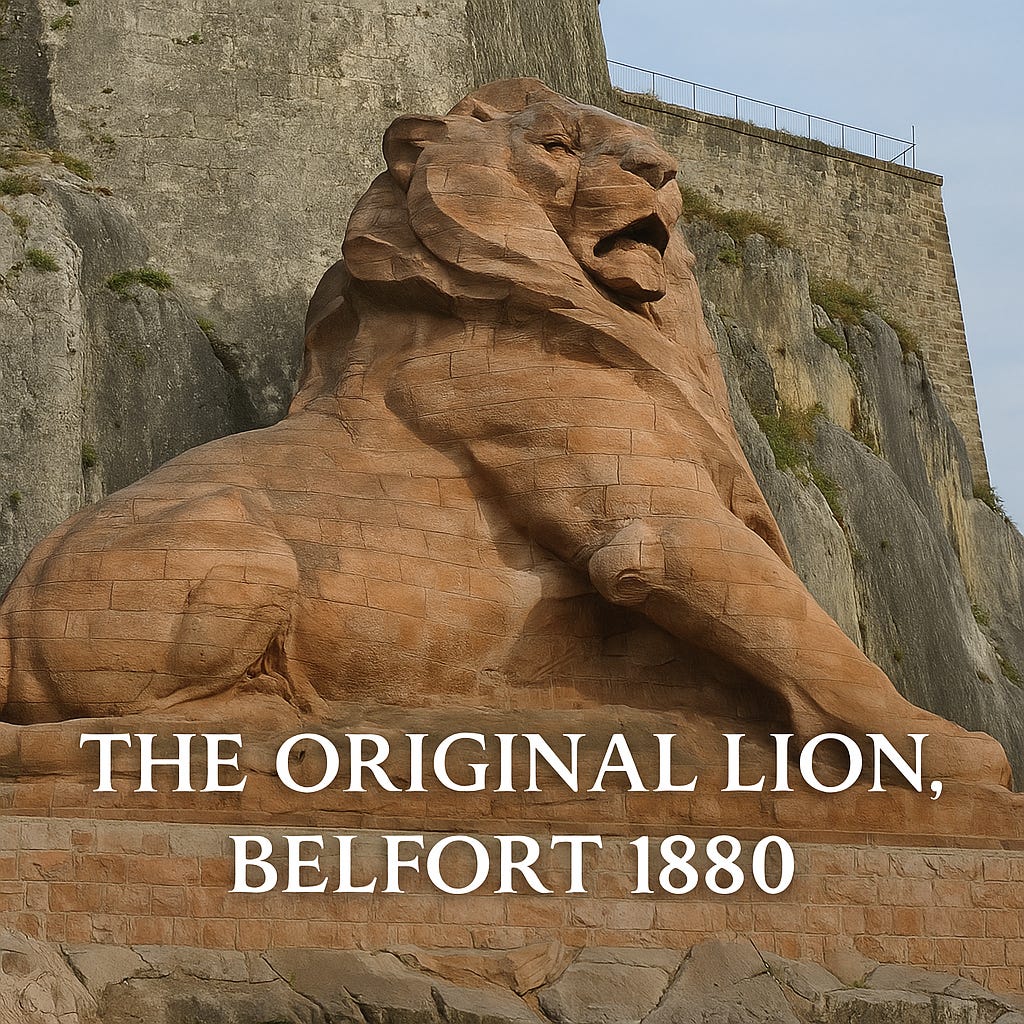The Lion, the Resister, and the Square: Denfert-Rochereau’s Many Lives
The Lion of Belfort replica by Bartholdi in the center of Place Denfert-Rochereau, Paris. Photo via Wikimedia Commons.
If you cross Place Denfert-Rochereau, you can't miss the huge bronze-black lion, the Guimard métro entrance, and the constant honking weave of traffic. This one square in the southern 14th arrondissement ties together two of France’s most defining acts of resistance: Belfort (1870-71) and Paris (August 1944).
The statue is a Paris-made copy. The name on the station—“Colonel Rol-Tanguy”—was a late, hard-won recognition of a communist hero. And beneath your feet lies the Resistance command post. All that, in one block.
Bartholdi’s Lion—Paris Version
The Lion de Belfort at Denfert-Rochereau is a one-third-scale replica by Frédéric-Auguste Bartholdi, executed in repoussé copper and installed here in 1880. It’s roughly 13 ft high by 23 ft long, acquired by the City of Paris after Bartholdi showed a plaster model at the 1878 Salon.
A bronze medallion of Colonel Denfert-Rochereau was added in 1920, stripped under Vichy for metal requisitions, and re-installed in 1979. The Paris lion has been protected as a historic monument since 2003.
A fun detail: in Paris the beast gazes roughly toward another Bartholdi icon—the Statue of Liberty on the Seine.
The Original in Belfort
Bartholdi’s original is a cliff-backed colossus in red Vosges sandstone, 36 ft high by 72 ft long, completed in 1880 to commemorate the town’s 103-day stand during the Siege of Belfort in the Franco-Prussian War.
It’s a muscular emblem of endurance; Bartholdi described it as “harried, driven back, and still terrible in his fury.”
Why Denfert ?
The square was renamed Place Denfert-Rochereau in 1879 (previously Place d’Enfer, “Gate of Hell”), honoring Colonel Pierre-Philippe Denfert-Rochereau, the siege’s defender.
The twin toll pavilions by Claude-Nicolas Ledoux still bookend the square, survivors of the 18th-century Farmers-General wall.
From Belfort to 1944: The Underground Story
Fast-forward to August 1944. Under the west Ledoux pavilion and today’s Liberation museum sits a subterranean defense shelter. Here Henri “Rol”-Tanguy, regional head of the French Forces of the Interior (FFI), established his command post during the Paris uprising.
Visitors can descend to this PC today; his wife Cécile Rol-Tanguy worked there as his liaison and typist, later becoming a vital witness to the period.
The Name on the Station (and the Street)
Because of Rol-Tanguy’s communist credentials, broad public honors were slow. That changed in the 2000s:
In 2004, the slice of roadway between the two Ledoux pavilions was officially named Avenue du Colonel-Henri-Rol-Tanguy.
The métro/RER hub is now signed “Denfert-Rochereau – Colonel Rol-Tanguy.” The subtitle began appearing in 2004 and was standardized across the system in 2019, although the locals still refer to it the old way.
Local memory-keepers note that Cécile herself helped preserve the bunker, catalyzing the creation of the museum that now bears their story.
Quick Compare: Belfort vs. Paris
Material: Belfort = sandstone; Paris = copper sheets
Scale: Belfort ≈ 72 ft × 36 ft; Paris ≈ 23 ft × 13 ft
Setting: Belfort clings to a citadel cliff; Paris commands an urban crossroads framed by Ledoux pavilions, the Catacombs, and the Liberation museum
If You’re Visiting
The Lion: Center of the square; look for the Denfert medallion on the base.
Musée de la Libération de Paris – Musée du Général Leclerc – Musée Jean Moulin: Free entry at 4 Avenue du Colonel-Henri-Rol-Tanguy. Don’t miss the underground command post tour.
Catacombs: Entrance is 1 Avenue du Colonel-Henri-Rol-Tanguy. Timed tickets required.
Transit: Métro Lines 4 & 6 and RER B, signed Denfert-Rochereau – Colonel Rol-Tanguy.
Why This Corner Evokes History
Denfert-Rochereau is a palimpsest of resistance:
a 19th-century lion that kept Prussians at bay,
a 20th-century resister who helped force the Germans out,
and a 21st-century museum that stitches them together—above and below ground.
Walk a slow circle around the plinth, then take the stairs down into the command post: same place, different wars, one through-line.
Sources & Further Reading
Brought to you by Treasure of Saint-Lazare, a gripping tale of wartime intrigue and romance. First in the Eddie Grant Series.








Lionizing the Lion of Belfort! Nice piece.